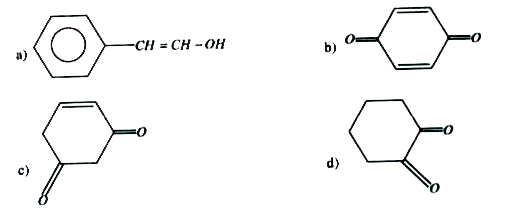Identify Bronsted Lowry acids in the reaction given below ?
[AIH2O)6]3++HCO3→[A](H2O)(OH)]2++H2CO3 Solution in Telugu
A,C
A,D
B,D
B,C
The correct Answer is:B
[AI(H2OCA)6]3++HNO−3⇔[Al(H2O)5(OH)]2++H2OCO3CA
Topper's Solved these Questions
- BOOK - AAKASH SERIESCHAPTER - IONIC EQUILIBRIUM EXERCISE - PRACTICE SHEET (EXERCISE -I LEVEL -II (ADVANCED ) (More than One correct answer Type Questions))8videos
IONIC EQUILIBRIUM
- BOOK - AAKASH SERIESCHAPTER - IONIC EQUILIBRIUM EXERCISE - PRACTICE SHEET (EXERCISE -I LEVEL -II (ADVANCED ) (Linked Comprehension Type Questions))6videos
IONIC EQUILIBRIUM
- BOOK - AAKASH SERIESCHAPTER - IONIC EQUILIBRIUM EXERCISE - PRACTICE SHEET (EXERCISE -I LEVEL -I (MAIN ) (Straight Objective Type Questions))34videos
IONIC EQUILIBRIUM
- BOOK - AAKASH SERIESCHAPTER - HYDROGEN AND ITS COMPOUNDSEXERCISE - QUESTIONS FOR DESCRIPTIVE ANSWERS20videos
HYDROGEN AND ITS COMPOUNDS
- BOOK - AAKASH SERIESCHAPTER - ISOMERISM EXERCISE - ADDITIONAL PRACTICE EXERCISE ( PRACTICE SHEET (ADVANCED) INTEGER TYPE QUESTIONS)10videos
ISOMERISM
Similar Questions
(A): HCl is not acidic in benzene.
(R): Benzene does not accept protons02:02View SolutionAcid base theories are important to understand the role of many substances in different reactions. Different theories are in practice which have advantages as well as limitations at their level. We always consider most convenient theory under the given conditions.
Which of the following is not Arrhenius acid01:13View SolutionExplain the acidic nature of phenol.
01:12View SolutionWhy the use of hard water is disadvantages?
01:52View SolutionTautomerism is exhibited by X number of compounds among the following. What is X.
 03:35View Solution
03:35View SolutionIdentify Bronsted -Lowry acids in the reactions given . [Al(H_(2)O)_(6)]^(+3) + HCO_(3)^(-) hArr underset(C)([Al(H_(2)O)_(5)(OH^(-))]^(2+)) + underset(D)(H_(2)CO_(3)) The correct Answer
01:14View SolutionIdentify Bronsted -Lowry acids in the reactions given .
[Al(H2O)6]+3+HCO−3⇔
[Al(H2O)5(OH−)]2+C+H2CO3D
The correct Answer03:00View SolutionIn the reaction
[A(H2O)6]3++H2O⇔[Al(H2O)5OH]2++H3O+01:03View SolutionThe reaction,
C6H5ONa+CO2+H2O→C6H5OH+NaHCO3
suggests that :02:25View SolutionThree reactions involving H2PO−4 are given below
I.H3PO4+H2O→H3O++H2PO−4
II.H2PO−4+H2O→HPO2−4+H3O+
III.H2PO−4+OH−→H3PO4+O2+
In which of the above does H2PO−4 act as an acid?02:00View SolutionThe Bronsted acids in the reversible reaction are HCO_(3)^(-)(aq.) + OH^(-) (aq.) CO_(3)^(2-)(aq.) + H_(2)O
View SolutionIn the reaction: [Cu(H2O)3(OH)]++[AI(H2O)6]3+→[Cu(H2O)4]2++[AI(H2O)5(OH)]2+
01:57View Solution[" Conjugate base of "HCO_(3)" ,is "],[[" (A) "CO_(2),],[" (B) "H_(2)CO_(3)],[" (C) "H_(2)O],[" (D) "CO_(3)^(2-)]]
04:50View Solutionwhich one of the following reaction is not associated with the solvay process of manufacture of Na_(2)CO_(3) ? (A) NaCl+NH_(4)HCO_(3) rarr NaHCO_(3) + NH_(4)Cl (B) 2NaOH + CO_(2) rarr Na_(2)CO_(3) + H_(2)O (C) 2NaHCO_(3) rarr Na_(2)CO_(3) + H_(2)O + CO_(2) (D) NH_(3) + H_(2)CO_(3) rarr NH_(4)HCO_(3)
04:39View SolutionH2O+H2O⇔H3O++OH− in this reaction water acts as
I) Bronsted Acid II) Bronsted Base
III) Amphoteric oxide03:18View SolutionWrite the Kc for the reaction CO2(g)+H2O(l)⇔H+(aq)+HCO−3
05:00View Solution

